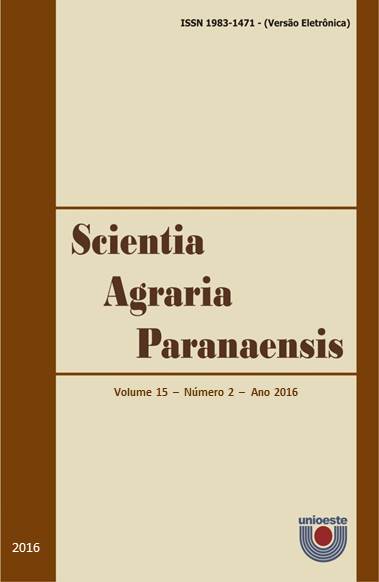Analysis of the production system of macassar bean (Vigna unguiculata L. Walp) in the municipality of Parari, Paraíba State
DOI:
https://doi.org/10.18188/sap.v15i2.11386Keywords:
Leguminosa, produção, sustentabilidade.Abstract
Macassar bean (Vigna unguiculata (L.) Walp) is no longer a culture only for family farmers and is now grown by medium and large producers in the North and Northeast regions, and also in countries of Africa and Asia, especially for its nutritional characteristics. The objective was to make a productive diagnosis of bean Macassar culture and meet some techniques used by bean producers in the municipality of Parari, Paraíba State, Brazil. The survey was conducted in 2011 with questionnaires to the 50 producers. It was found that most farmers, 45% has an area of 2 hectares for common bean cultivation, as follows: 55% of farmers get their seeds with property of neighbors, while 45% of them cultivate this legume in clay soils. Almost 85% use the bean as intercropping, always with the corn. According to the data 90% of producers do crop rotation, and producing 90% of its grains stored in metal bins. It is concluded that the bean is a culture of extreme importance to the economy and agriculture of survival in this region, requiring therefore new technologies to increase production and sustainability of the producer.Downloads
Published
05-07-2016
How to Cite
SOUZA, J. T. A.; FERREIRA, R. C. C.; FERREIRA, T. C.; DA SILVA, K. E.; DE FARIAS, A. A.; CRUZ, M. P.; OLIVEIRA, S. J. C. Analysis of the production system of macassar bean (Vigna unguiculata L. Walp) in the municipality of Parari, Paraíba State. Scientia Agraria Paranaensis, [S. l.], v. 15, n. 2, p. 153–157, 2016. DOI: 10.18188/sap.v15i2.11386. Disponível em: https://e-revista.unioeste.br/index.php/scientiaagraria/article/view/11386. Acesso em: 10 may. 2025.
Issue
Section
Scientific Article
License
Aviso de Direito Autoral Creative Commons
Política para Periódicos de Acesso Livre
Autores que publicam nesta revista concordam com os seguintes termos:
1. Autores mantém os direitos autorais e concedem à revista o direito de primeira publicação, com o trabalho simultaneamente licenciado sob a Licença Creative Commons Attribution que permite o compartilhamento do trabalho com reconhecimento da autoria e publicação inicial nesta revista.2. Autores têm autorização para assumir contratos adicionais separadamente, para distribuição não-exclusiva da versão do trabalho publicada nesta revista (ex.: publicar em repositório institucional ou como capítulo de livro), com reconhecimento de autoria e publicação inicial nesta revista.
3. Autores têm permissão e são estimulados a publicar e distribuir seu trabalho online (ex.: em repositórios institucionais ou na sua página pessoal) a qualquer ponto antes ou durante o processo editorial, já que isso pode gerar alterações produtivas, bem como aumentar o impacto e a citação do trabalho publicado (Veja O Efeito do Acesso Livre).
Licença Creative Commons
Esta obra está licenciada com uma Licença Creative Commons Atribuição-NãoComercial-CompartilhaIgual 4.0 Internacional, o que permite compartilhar, copiar, distribuir, exibir, reproduzir, a totalidade ou partes desde que não tenha objetivo comercial e sejam citados os autores e a fonte.


